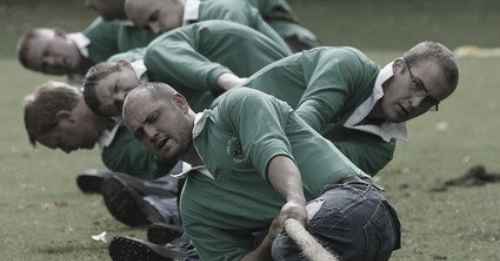By John J. Murphy
In 1993 I wrote a book titled, Pulling Together: The Power of Teamwork. The book aimed primarily at helping leaders unite people and inspire them to work together for common good rather than separate and point fingers. It also helped team members see more value in one another and use this insight to boost synergy – the power of teamwork. Today, almost thirty years later, the lessons seem more relevant than ever.
In 2010 Simple Truths, now a publishing brand of Sourcebooks, republished the book with the subtitle 10 Rules for High Performance Teamwork. These ten rules capture the essence of my original work. Therefore, when I was working on an article for Mindful Leader, especially with election month coming up, I immediately thought about the timeless relevance of these 10 powerful “rules.” In this article, I will share what they are and how you can apply them to mindfully channel diversity into synergy with your team.
The Ten Rules:
#1 Put the team first
Put the “we” in front of the me. I often refer to this as exercising “we-opic” vision – asking “What’s in it for we?” This approach often leads us to Option C – the creative, win-win option. While it is common human nature to separate and divide (ego mindset) and debate over Option A and B, mindful leaders remind team members that other options exist. Thus, when searching together as a united team with an open, curious mind, we find alternatives that otherwise are missed.
#2 Communicate openly and candidly
This rule reminds us to be open and candid with one another. No hidden agendas. Honest, timely and constructive feedback is essential. Can you imagine a team of athletes competing for a win without access to the scoreboard? The timeclock? The playbook? Consider how well you and your team are informed on key metrics and feedback in your line of work. Make sure you know the score!
#3 Be part of the solution, not the problem
As teams, we have missions to accomplish and improvements to make. To be most effective we need clarity, focus, alignment, and heartfelt commitment to moving forward together and finding solutions. We need positive energy and can-do attitudes. We do not need to make one another the problem or the challenge. Stop and ask yourself, am I pulling people together or am I getting in the way?
#4 Respect diversity
It is our differences that educate and awaken us. How are we to understand what “up” means without down or what yellow means without red? Without contrast, we can know nothing. This is precisely why wise team leaders demonstrate contemplation and mindfulness when pulling people together. We seek first to understand – current state results, stakeholder needs, mission requirements, customer specifications – the facts – without bias and preconceived solutions. We encourage open and candid communication, and we respect divergent points of view. It is through healthy diversity that we grow stronger as a team, organization – and nation.
#5 Ask and encourage the right questions
Building a healthy team culture requires a healthy level of questioning with positive and productive intent. For example, what is the team’s mission and why is this important? What is the team’s vision and what obstacles stand in our way? What data and information needs to be collected and shared to align the team? The art of questioning is indeed a key mindful leadership skill. It is a “pulling” technique, challenging people to think, to probe, to investigate, to challenge assumptions and to find answers for themselves. Stop and consider. What questions are you asking?
#6 Use a rational problem-solving process
Often, team members mean well but they are at different stages of the problem-solving process. Some are mining data. Others are brainstorming solutions. Some are deep in analysis. And a few might be wondering why they are even on the team. A good, logical problem-solving methodology keeps everyone aligned and together throughout the mission. Personally, I like to use DMAIC – Define, Measure, Analyze, Improve/Innovate, Control. This model works with organizations large and small in virtually any industry. I have used it with start-up companies, Fortune 100s, hospitals, U.S. military teams, and government agencies. We start by defining the current state – good, bad, and ugly. We define the team mission, the team charter, the team members, and sponsorship. We measure the current state – critical data and information. What do the data have to say? We then analyze the data. What does it mean? What knowledge and intelligence can we gain from it? And how can we use this intelligence to make improvements and control (sustain) the positive changes?
#7 Build trust with integrity and example
Trust is a cornerstone to pulling people together and generating high performance teamwork. At the end of the day, we need to feel like we can count on one another – despite our differences. We need to feel connected – beyond any organization chart or political labeling. And we need to feel like we are doing the right thing – for the We and not just the me. Trust is a learned behavior, as is distrust, and it is a direct reflection of the leadership. Stop and ask yourself, are you cultivating a trusting environment? Are you walking your talk?
#8 Commit to excellence
It is a lot easier to forgive mistakes when you know it wasn’t intentional. We all make mistakes. The difference is recognizing each team members’ level of commitment to continuous growth and improvement. If we know our leaders and fellow team members are truly committed to doing great work for the greater good, we can more easily trust them and see past their mistakes. Each of these rules builds upon the others.
#9 Promote interdependent thinking
This is “we-opic” vision at its finest. It is the big picture. It is seeing and thinking and behaving beyond the isolated, independent, dualistic, ego-mindset. We know we are thinking interdependently when we value help – both in offering it and in receiving it with humility and grace. Consider asking “How can I help you help me help you?”
#10 Pull the weeds
Like a mindful gardener, it is wise to “remove obstacles” impeding growth and prosperity. Do not be fooled. Weeds may seem harmless. They may even blossom from time to time. But a weed cannot be trusted. Beneath the surface, it is doing everything it can to take over your garden.
As we continue to face a very uncertain and challenging landscape – socially, politically, economically, and environmentally – I encourage you to use these “rules” as guidelines in your personal and professional life. May they help you and your team members see things more clearly, communicate differences more openly, and harmonize with one another more synergistically.
John J. Murphy is an award-winning author and the Founder (1988) and CEO of Venture Management Consultants, Inc., a firm specializing in transformational culture change, mindful leadership, Operational Excellence, and high-performance teamwork. Visit his website www.johnjmurphy.org for more information.






Leave A Comment